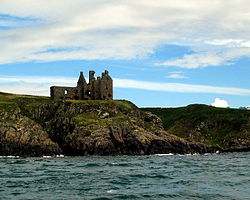Scheduled monument
nationally important archaeological site or historic building in the United Kingdom, given protection against unauthorised change
In the United Kingdom, a scheduled monument is a nationally important archaeological site or historic building. The schedule legally protects the monument from unauthorised change.


The protection of scheduled monuments is given under the Ancient Monuments and Archaeological Areas Act 1979.[1] There are about 20,000 scheduled monuments in England.[2]
According to the 1979 Act, a monument cannot be a structure which is occupied as a dwelling, used as a place of worship or protected under the Protection of Wrecks Act 1973.
References
change- ↑ "Ancient Monuments and Archaeological Areas Act 1979". Retrieved 6 June 2011.
- ↑ "Scheduled Monuments" (PDF). Department for Culture, Media and Sport. March 2010. Archived from the original (PDF) on 4 December 2012. Retrieved 7 June 2011.